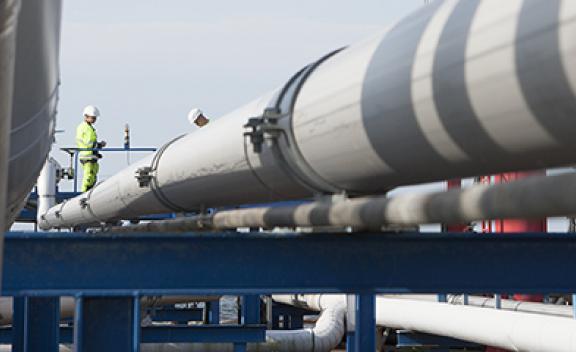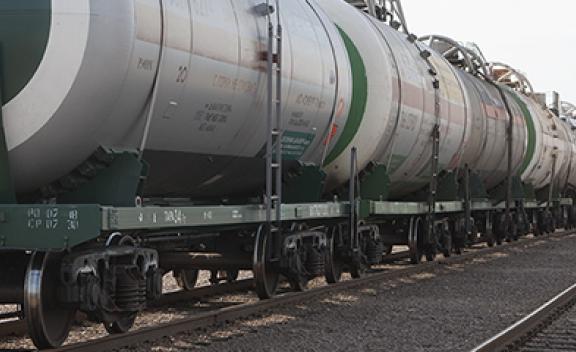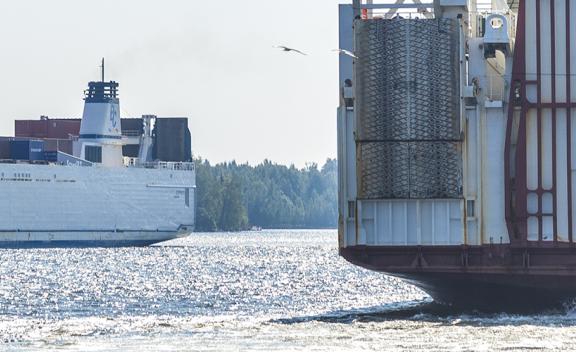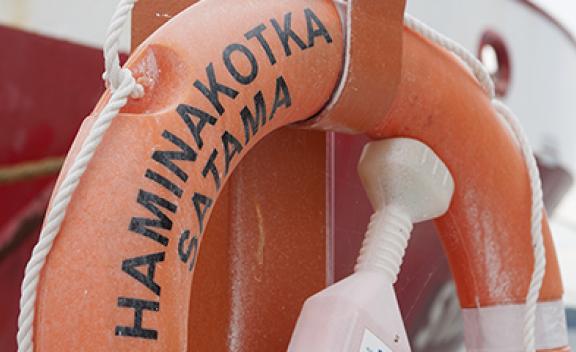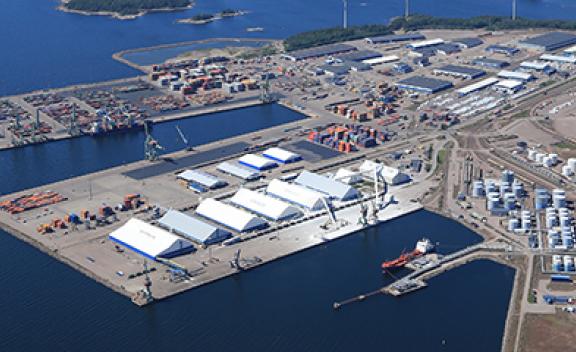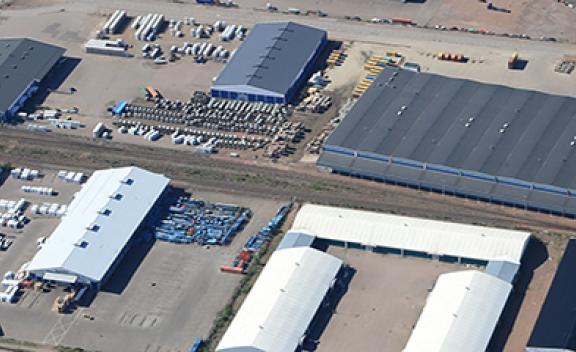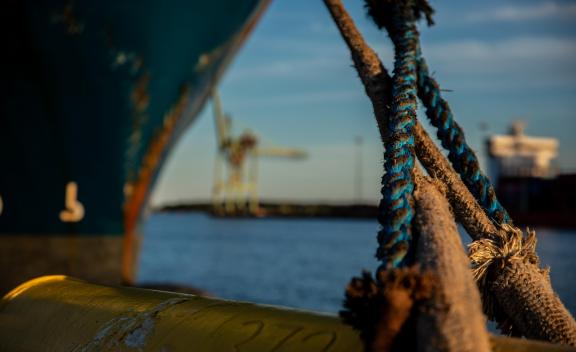
This year, Port of HaminaKotka Ltd will donate the funds reserved for Christmas gifts to the “Save a piece of the Baltic Sea” campaign of the Clean Baltic Sea project run by the John Nurminen Foundation. The campaign launched two years ago raises funds for the efforts of the Foundation to benefit the Baltic Sea.
“The campaign has been received really well. On our website, donors can see how their donation is allocated to the various Baltic Sea projects and how much algae their donation can remove from the sea,” says Marjukka Porvari, who heads the Baltic Sea projects at the John Nurminen Foundation.
The Foundation gathers just over one million euros in donations annually. Of this, about 75-80 per cent is directed to concrete protection efforts.
“The Baltic Sea is our home sea, which is why its good condition must be important to all countries surrounding the sea,” says Kimmo Naski, CEO of Port of HaminaKotka Ltd.
The principle of the projects carried out by the John Nurminen Foundation outside Finland has been that the party which causes emissions takes part in the financing of remedial action.
“It is our policy that the costs are shared between the project parties on a 50/50 ratio. The Foundation provides technical planning work and the necessary equipment. The assisted party takes care of the construction work, licensing processes and local planning as well as the operating costs of the equipment.”
Clear successes in the Hamina-Kotka region
The foundation has fought the eutrophication problem caused by nutrient emissions, and has achieved magnificent results especially on the Gulf of Finland.
“In the past 10 years, the Foundation together with public sector parties, development banks and Russian partners has been able to reduce the phosphorus emissions, which cause eutrophication, by 75 per cent on the Gulf of Finland. This could be described as record-breaking performance on our planet, and we Finns can take real pride in it,” Marjukka Porvari rejoices.
The good results are due to successful projects in our neighbouring country. The St Petersburg water utility has managed to cut the emissions to the Gulf of Finland by one third. This was achieved in a joint project ended in 2011 by intensifying phosphorus removal at the biggest water treatment plants in St Petersburg. A fertiliser plant located at Laukaanjoki in North-Western Russia near the Estonian border was one of the worst polluters on the Gulf of Finland until 2012, but its large-scale emissions were brought under control through the co-operation of the John Nurminen Foundation and EuroChem, which owns the fertiliser plant. The intensification of wastewater purification in the towns of Vyborg, Hatsina and Kingisepp also has a direct impact on the water quality in the sea areas outside the Hamina-Kotka region.
“These successes are especially important to the inhabitants of Kotka and other parts of the Eastern Gulf of Finland. We have had many contacts with happy summer house owners telling us that their seaside waters have become significantly clearer,” Marjukka Porvari continues.
Internal load remains a burden
Even though the trend in our own region has been positive, the problems in the main basin of the Baltic Sea, for example outside the island of Gotland, have increased. According to Marjukka Porvari, water with a very high phosphorous content drifts from this area also towards our own sea area, carried by sea currents and winds.
“Fortunately, this does not happen every year, and in most cases its impacts do not extend to the Eastern Gulf of Finland, but phosphorus released from the oxygen-free bottom of the Baltic Sea is a serious problem to us, too. We are currently running a project of exploring and also experimenting in practice with possibilities to reduce the load, which has already ended up in the sea, by preventing the release of nutrients from the seabed.”
One way of reducing nutrients ending up in the sea is the local fish project in the Archipelago Sea, launched by the Foundation in 2014. Within the project, fish of the Cyprinidae family, which are rich in nutrients but utilised to a small degree, are fished from the sea and delivered to food production. Other proposed methods include oxidation of the seabed and the prevention of the release of phosphorus by various materials and chemicals. The removal of the surface layer of the bottom sediment by vacuuming will also be investigated.
Agriculture is currently the biggest source of nutrient loads on the Baltic Sea. Finnish researchers have developed a quick and well-functioning first aid to the nutrient runoff coming from fields: gypsum treatment of fields, which has turned out to be a very effective solution.
“The Foundation has been involved in implementing gypsum treatment on fields in South-Western Finland and now on the River Vantaa. Much work has already been done, but there is still plenty left to do, especially in terms of emission from agriculture and the internal load of the sea,” Marjukka Porvari states.
The sea is important
Marjukka Porvari is an environmental specialist and economist living in Porvoo, but her background is strongly rooted in her mother’s hometown of Kotka. She used to spend her childhood summers with her grandparents, who were eager boaters and had a summer cottage outside Mussalo. Being an enthusiastic sea canoeist, Marjukka also has a summer cottage of her own beside the sea, and for a length of time she had a traditional wooden boat made in Summa in Hamina at the cottage.
“Open places like the sea and the fells are important to me. Work for the Baltic Sea means a lot to me, and it is really great to see how the efforts of our Foundation have produced good results especially in Kotka. I would like to extend my warm thanks to the Port of HaminaKotka and all others who have contributed to the work for the Baltic Sea. Merry Christmas season to everyone!”
“Save a piece of the Baltic Sea” campaign: https://www.puhdasmeri.fi/




